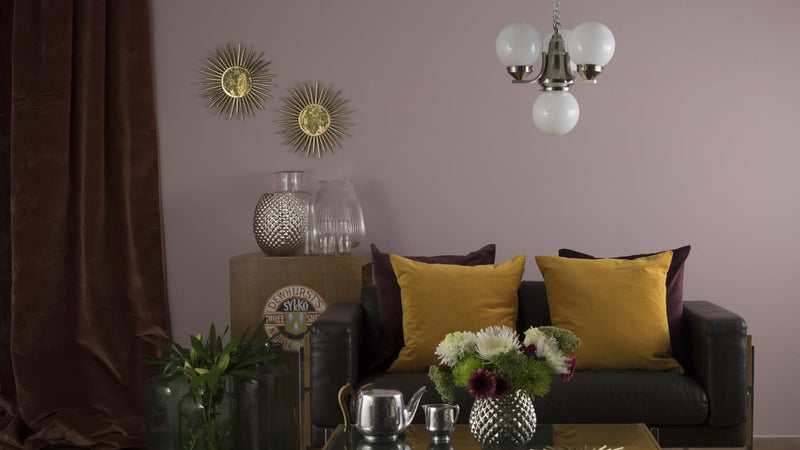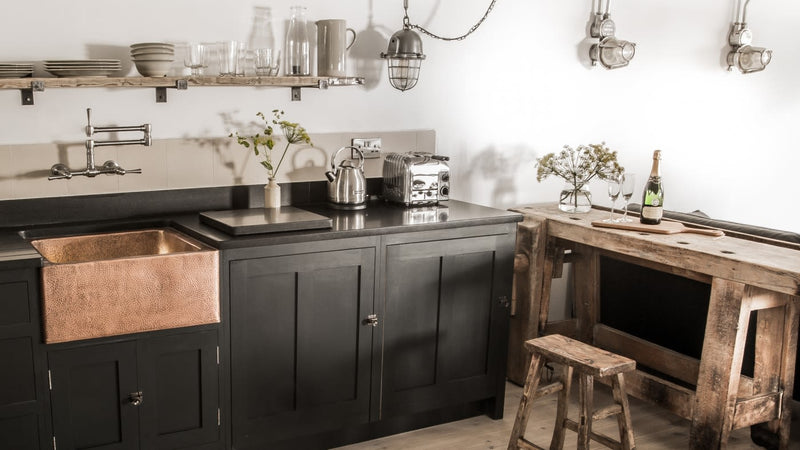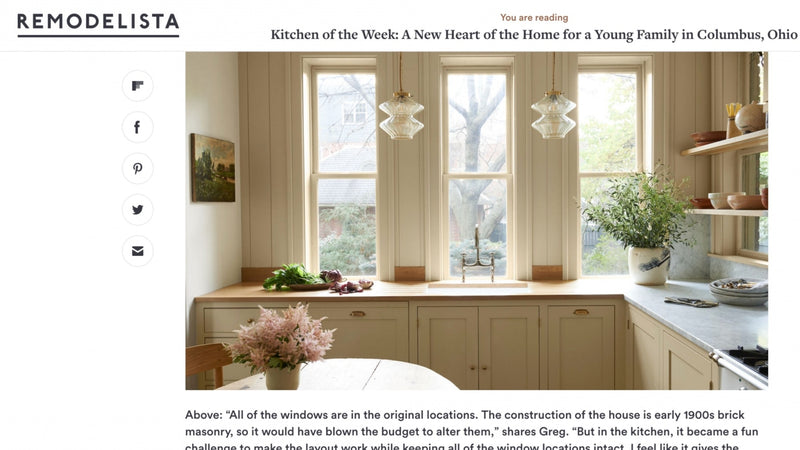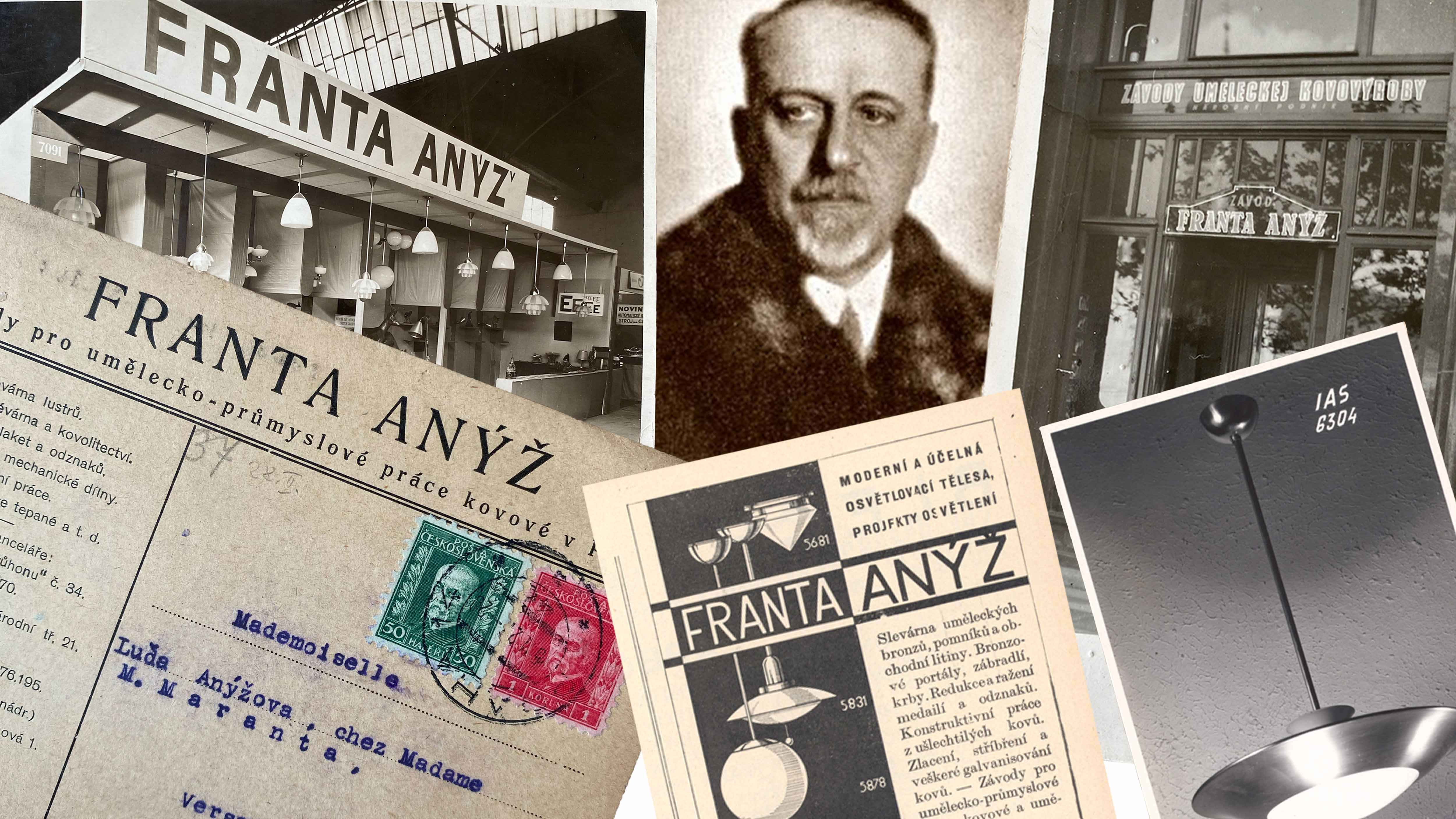
The creators who put Czechoslovakian design on the map
Inspiring our latest Czech Creators collection of vintage lights, join us on a trip to the National Technical Museum in Prague, where we uncover 20th century metalworkers Franta Anýž, NAPAKO and Josef Hůrka’s greatest works.
Deep dive into the archive
It’s a bitterly cold December day in Prague as we take a break from sourcing vintage lights and make our way to the Czech Republic’s National Technical Museum. Founded in 1908, the imposing, functionalist stone building houses the country’s most important technical ingenuities, and is in itself a microcosm of 20th-century Czechoslovakian history. Undergoing Nazi occupation during WWII, nationalised under Communist rule in 1951, and even flooded in 2002, it’s also home to the National Archive. We take a seat at an empty desk and an enormous trolly load of box files is wheeled in front of us.
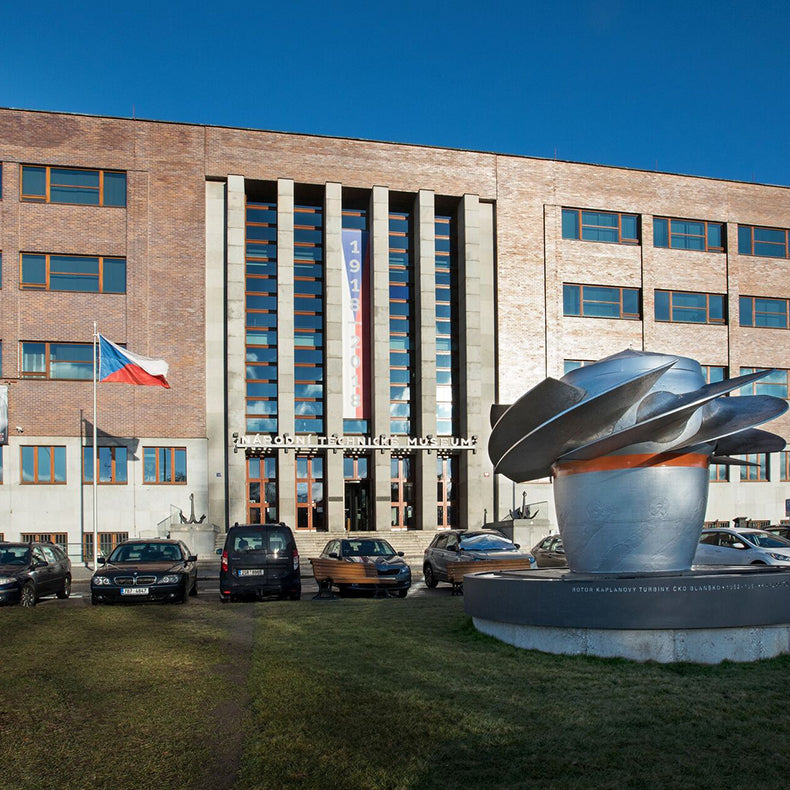
The National Technical Museum in Prague. Image credit: NTM, Prague
Our obsession with the history and heritage behind the vintage lights we salvage and restore has led us here. Intrigued to get to the bottom of some of our favourite mid-century lights from renowned designers such as Franta Anýž and Josef Hůrka, what follows is a time-capsule opening of long-forgotten material; prolific hand-drawn product designs, hand-written ledgers of commissions, original catalogues, letters and photographs - all documented and owned at the time by the State (and because of this, now carefully preserved). Like stepping back in time, the documents provide our teams with invaluable insight into the design and making process of these precious pieces; helping us source, identify and date certain products, map their path through restoration, and bring the story of our lights to life in ways that we suspected, but had never quite proven. Until now!
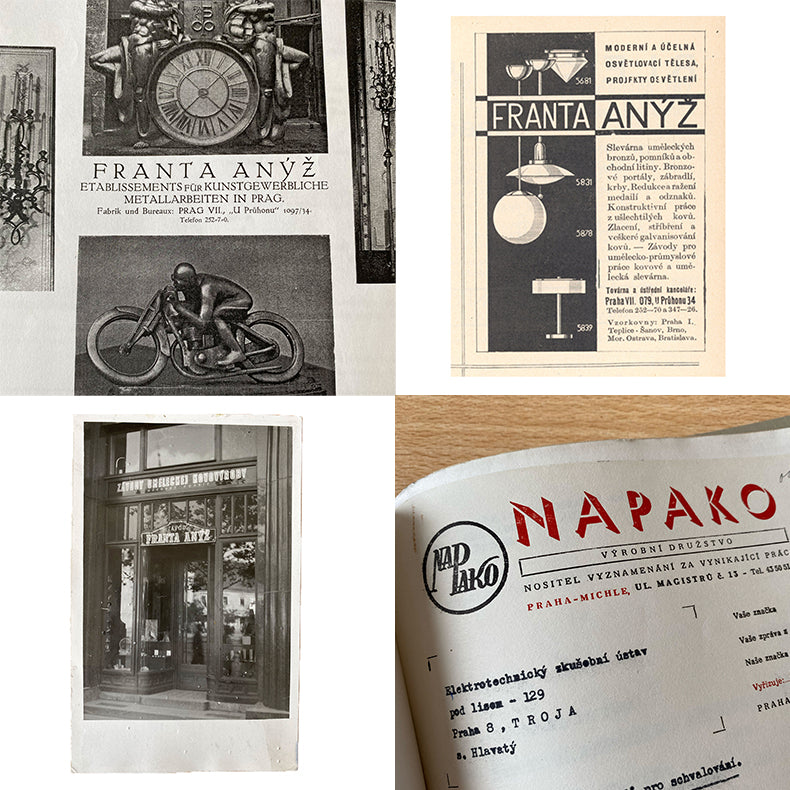
Franta Anýž
Acclaimed Czech metal artist Franta Anýž (1876-1934) became known for elevating everyday objects to high art status, eventually casting some of Prague’s most famed monuments. In his lifetime he witnessed the emergence of some of the most enduring and influential design movements of the 20th Century. From Art Nouveau through to Art Deco and then Bauhaus, the movements were translated into much of his work, including decorative pendants and even medical lamps that we restore and salvage here at skinflint today. Born into a metalworking family, Franta initially trained as an iron works modeller, moulder and chiseller, and, because of his talent, went on to study at Prague’s School of Arts and Crafts (UPŠ) from 1892 to 1899 amongst some of the most eminent professors of Czech arts and culture.

Original manufacturer’s catalogues from Franta Anýž show the calculated and scientific designs behind one of our restored medical operating lights.
Art Nouveau: ‘New Art’
At the turn of the 19th century, UPŠ became one of the centres of the Art Nouveau movement. Franta travelled with the school and represented Czech art at the 1900 World Exhibition in Paris, where it won the prestigious Grand Prix Prize. This influence is felt later in the lighting designs of Franta’s own fledgling company. Decorative and uncompromising, Art Nouveau or ‘New Art’ emerged as a conscious, dynamic creative style from the early 1890s to WWI. Taking inspiration from the unruly natural world, organic forms and curved flowing lines were characteristic motifs, as demonstrated in some of his more ornamental archive drawings.

A Franta Anýž ledger from the archive showing Art Nouveau-inspired designs. Thousands of these numerical, hand-drawn sketches are eventually realised into real-life lights, some of which are still in circulation today and salvaged and restored by our team.
Art Deco: ‘Celebrating Modernity’
Following WWI, the Franta Anýž metalworking enterprise became one of the most important in the country. Art Deco also emerged in this period, with its opulent, glamourous and celebratory style a likely reaction to the austerity of war preceding it. Drawing on many influences, from cubism and constructivism, to the sleek streamlined designs of engineering and aerospace, they were united by one common aim - the celebration of modernity. Art Deco design is always distinctive, with sleek, simple often graphic ornamentation, sharp geometric angles and soft curves, bringing together the elegance of materials such as glass, chrome and copper, again seen in many of his celebratory pieces we salvage and restore today.
The Bauhaus: ‘Art into Industry’
Another design movement also came into existence around this time. Founded in 1919, Bauhaus emerged with a radical vision from its founder Walter Gropius; to bring together fine arts and design into one utopian craft guild, combining architecture, sculpture and painting. But as it evolved, it became clear the initial emphasis on craft was financially impractical. In 1923 Gropius repositioned Bauhaus to become a delicate balance of preserving the artistic vision of the individual, with the importance of designing for mass production. It was at this time that the school adopted the slogan ‘Art into Industry. It’s clear from the pieces designed by Franta Anýž and other Czech designers such as Josef Hůrka, that they too, were trying to achieve this concept. That is; creating beautiful, functional pieces of art, that could be mass-produced for everyday use.

In our collection, Anýž’s 1930s antique pendants seemingly take influence from both the Art Deco (luxurious materials such as copper) and Bauhaus movements, combining simple, geometric design with function above all, seen in its upward and downward lighting design.


Josef Hůrka and NAPAKO
Despite the wealth of material on NAPAKO in the archive, acclaimed Czech designer Josef Hůrka still remains an enigma of sorts. Verifiable information on Hůrka is scant, but what we do know is that the prolific designer created highly sought-after table, floor and ceiling lights for collectives such as NAPAKO (founded in Prague in 1919), Lidokov and Drupol. With a career spanning four decades, Hůrka began designing electrical appliances before specialising in household lighting. But it was his work with NAPAKO that proved most fruitful and collectable today.

Illuminating discoveries: The archive material helped us establish our 1970s cut glass ceiling lights, skyscraper glass pendants and square cut rodded pendants are in fact attributed to Josef Hůrka.
Delving into the archive material, what is clear is how much the Art Nouveau, Bauhaus and Art Deco design movements also inspired Hůrka’s work. Some of his most collectable table lights often appear in bright colors, or take abstract, angular or geometric forms, with little ornament, as seen in these classic UFO-shaped Bauhaus-inspired pendant lights.



From concept to reality: The sketch of Art Deco pendant 5952 and a photograph of the real-life design is that of our 1920s Czech opaline chandelier.
Elsewhere we’re struck by intricate hand-drawn geometric designs that almost perfectly resemble the cross-cut glass of our popular Retro Czechoslovakian pendants (below), and another sketch similar to the underside of our Decorative opaline Czech pendants. Whilst we can’t attribute these products directly to Hůrka’s original archive sketches, his concepts and realised products undoubtedly left a lasting legacy on Czech design, inspiring future designs that have since become classics.


Today, after careful research, salvage and restoration, you’ll spot lights from Hůrka and Anýž living their second lives in homes, restaurants, hotels and bars around the world, with our team proudly playing their part in this next chapter.
Explore our Czech Creators vintage lighting collection.
You might also like
The History of Art Deco Lighting
Tracing the history of Art Deco lighting and the iconic design aesthetic to piece together the story of our newly restored pieces in our collection.
Lighting HistoryKitchen lighting design ideas
Helpful ideas and tips for creating your own kitchen lighting scheme from the lighting designers at skinflint.
Lighting adviceRemodelista: Kitchen of the Week
Our vintage Czech hotel pendant lights have received lots of attention after featuring in US online-magazine Remodelista’s ‘Kitchen of the Week’.
In the press